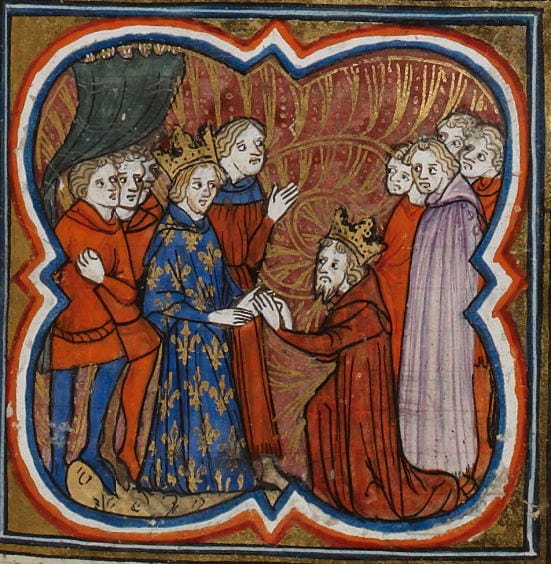From Historic UK:
By the early 1330’s the dynamic at play was not to Edward’s liking. Still in possession of Gascony, an important commercial partner for England, Edward held the title of Duke of Gascony and found himself subject to the French Crown as a vassal of King Philip VI. This did not sit well with the English king and by 1337, the situation escalated when Philip VI decided to confiscate Gascony and launched a raid on the southern coast of England in a simple act of provocation which left Edward with the perfect justification for war. Edward in response declared that the French Crown was in fact his and even went to the trouble of adding the fleur-de-lys to his coat of arms, an indication of his intentions towards the French.Share
This was the moment that marked the beginning of the Hundred Years’ War. With Edward III’s renewed interest in the French Crown, both sides sought alliances, with England turning to the Low Countries and France looking for support from Scotland and Spain. Whilst the stage was set, international conflict did not break out until 24th June 1340 at the Battle of Sluys, sometimes referred to as the Battle of l’Écluse. This encounter would be the first of many between the English and French, marking decades of further skirmishes. The battle itself took place at Sluys, in the Scheldt estuary of the Low Countries and would prove a first major naval victory for the English who were able to capture and sink the French fleet. (Read more.)


















No comments:
Post a Comment